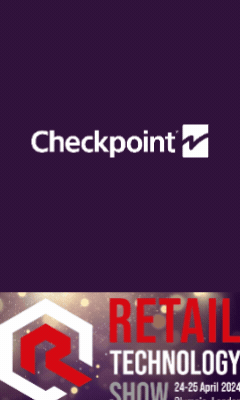Research suggests that 75% of customer feedback remains unread
Warwick Business School reveals that companies are unable to manage increasing volume and complexity of customer insight
Research by Warwick Business School reveals that companies receiving a minimum of 1,000 pieces of customer feedback per month are unable to analyse it in a meaningful way. The sheer volume and variety of customer feedback prohibits its full use to help provide better customer service and aid management decision making.
3,000 pieces of actual customer feedback in total from Asda, Audi and National Express were used in the study, which was the result of a £3000 academic award granted to Rapide Communication by the INDEX (Innovation Delivers Expansion) scheme.
With large multinational companies encouraging feedback via multiple sources, such as text and voice messages, contact forms, letters and increasingly social media platforms, internal marketing teams are simply unable to analyse all customer feedback received, due to time constraints and fatigue encountered when reading and processing customer comments.
Chris Worth, an associate of Warwick Business School brought in as an independent researcher appointed by Warwick Business School’s Dr Temi Abimbola, said:”Faced with a mass of data, human beings will make a rational choice: cut down the complexity to something manageable. When dealing with thousands of customer comments, that led to 75% of the data being tossed and the focus narrowing to a few key categories. That’s dangerous, because the most profitable opportunities are often hidden in little gems of data hidden in dark corners…. which companies appear to be missing.”
The research replicates the situation within the majority of UK customer facing companies where human analysts try to understand and analyse customers’ feedback. The research pitted three human analysts against Rant & Rave, a sophisticated text analysis technology, which has been developed by Rapide Communication in association with The University of Birmingham, to analyse customer feedback.
1,000 pieces represents the minimum average amount of feedback a national high street company can expect per month. When companies are running special promotions actively asking for feedback, the number can even reach 100,000 pieces of feedback per month. In a major company, the feedback would need to be analysed, and used as the basis of concrete recommendations to remedy any issues raised within the feedback. The analysis is then further collated to provide information which is critical to improving the overall customer experience from the company.
Each human analyst spent 30-50 hours (132 in total) looking at 750 pieces of feedback (250 from each company). They all did the same set of 750. i.e. a quarter of the total (3000 comments) and had to discard 75% of the data due to time constraints.Even handling 750 comments each was difficult to manage along with other work responsibilities which they were expected to handle to replicate a typical customer feedback analyst’s role.
The analysts needed to sort the feedback into 15 different categories and rank each piece of feedback according to the positive or negative sentiment expressed within it. The analysts were also asked to provide suggestions and risks related to the feedback. The humans, however, were unable to spot trends or provide meaningful recommendations or risks as the human brain simply cannot process such large data sets.
Rant & Rave, the customer feedback analysing software processed (categorised, ranked and made recommendations) the full 3,000 pieces of feedback in less than five minutes. The categories that the software selected were similar to those selected by the analysts. However, more significantly, the artificial intelligence engine understood and correctly interpreted the range of sentiment in the feedback, while the human analysts tended to use a narrower range in their interpretation of feedback. The analysts regularly used 3 – 4 categories to tag the feedback, demonstrating feedback fatigue and the creation of a comfort zone. Rant & Rave used a broader range of categories to classify the data.
Rant & Rave on the other hand took the unstructured text – in this case, 3, 000 customer comments – and reduced it to quantifiable form, “understanding” the linguistics of each comment, “scoring” the sentiment, and deriving relationships between ideas. Its output, in addition to its analysis, is a SWOT report that extracts sample comments identifying Suggestions and Risks.
Nigel Shanahan, MD of Rapide Communication: “Getting to the heart of what a customer wants is critical today as high street brands fight even harder to keep their customer base loyal. By asking for and then failing to analyse customer feedback, companies are unable to create a complete picture of their performance and their customers’ attitudes towards them. 1,000 pieces of feedback per month is a manageable number but human analysts are facing increasingly complex feedback which is not uniform, for instance a text message will use different language to a social media entry or a formal letter. As companies strive to gain more customer insight, they will increasingly be faced with a growing amount of unmanageable data. This is where Rant & Rant can analyse the data and leave the actual higher value activity of recommending how to change a business to the human analyst.”














